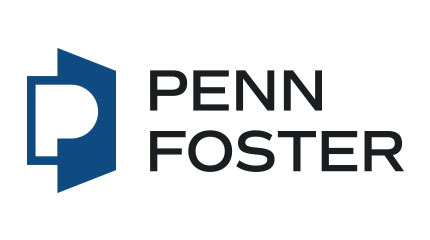Open the Door to a New Career with Penn Foster
NYICD is no longer accepting new students but you can still take the next steps toward a new career or further your education with our affordable, online sister school, Penn Foster. With over 130 years of experience in distance education and a broad range of accredited career, college, and certificate programs in in-demand fields, you can open the door to a new job, build industry-recognized skills, and take the next step toward the life you want – still completely online, at your own pace.
In-Demand Healthcare Career Training with Penn Foster
Take the first steps toward an in-demand, rewarding career in healthcare with Penn Foster. With accredited online programs in clinical and administrative roles, you can build the skills you need on your schedule, online.
Personalized Support from Experts in Your Field of Study

Our online Medical Billing and Coding Course prepares you to pass the CBCS exam from the National Healthcareer Association.
Healthcare is the fastest growing industry in the United States, and with your medical billing and coding certification, you’ll be ready to join the workforce.
Course Description
Our Medical Billing and Coding class was developed by industry professionals. Program topics include medical terminology; insurance plans; medical ethics; HIPAA; diagnostic and procedural coding; coding compliance and auditing; physician and hospital billing; Medicare, Medicaid; and workers’ compensation.
Medical Billing and Coding Course Outline
Unit 1: Medical and Body Systems Terminology
1.1 Medical TerminologyIntroduction to basic medical terminology and word formation; identification of the four major word parts of medical terms; building, defining, and analyzing medical terms.
Discussion of the anatomy and physiology of the integumentary, musculoskeletal, digestive, cardiovascular, lymphatic, respiratory, endocrine, and nervous systems; identification of associated terms, conditions, and abbreviations.
Discussion of the anatomy and physiology of the urinary and reproductive systems, the specialties of gynecology, obstetrics, and neonatology, and the anatomy of the eyes and ears; identification of associated terms, conditions, and abbreviations.
An overview of the terminology related to major chronic and infectious diseases as well as surgical treatments for those diseases.
Unit 2: Understanding Managed Care
2.1 Introduction to Professional Billing and Coding CareersAn introduction to the different types of facilities that employ allied health personnel; job descriptions pertaining to billing and coding careers; options available for certification.
The history and impact of managed care; the organization of managed care and its effect on the provider, employee, and policyholder; patient financial responsibility; types of managed care plans and insurance coverage.
Key elements of managed care contracts; covered services for patients, including preventive medical services and office visits; protected health information; patient information disclosure; HIPAA security standards and regulations compliance; HITECH and EHRs.
Unit 3: Medical Coding
3.1 Understanding ICD-10-CM CodingSimilarities and differences between ICD-9 and ICD-10 codes; differences between a crosswalk and mapping; general ICD-10 coding guidelines; new features in ICD-10-PCS.
Guidelines for procedural coding within the hospital setting; comparison to ICD-9-CM Volume 3; an explanation of the analysis, assignment, and sequencing of ICD-10-PCS codes.
History of CPT; evaluation and management (E/M) services and code assignment; CPT categories; modifiers and add-ons; using the CPT index; code ranges and conventions.
Two levels of HCPCS Coding; modifiers; interpreting and identifying correct code linkages; reviewing codes for accuracy; federal laws, regulations, and penalties pertaining to coding compliance; the National Correct Coding Initiative; medical ethics for coders.
Implementing a coding audit; reviewing and analyzing medical records; content and documentation requirements.
Unit 4: Medical Billing
4.1 Physician Medical BillingCompleting medical claim forms accurately, both manually and electronically; defining claim form parts, sections, and required information; the CMS-1500 claim form; reasons why claim forms are delayed or rejected; filing a secondary claim.
The hospital inpatient billing process; submitting accurate and timely hospital claims and practicing good follow-up and collection techniques; differentiating between inpatient and outpatient services; the UB-04 (CMS-1450) hospital billing claim form.
Government billing guidelines; determining the amount due from a patient for a participating provider; Medicare fee schedules; completing accurate Medicare forms; identifying types of Medicare fraud and abuse.
Requirements for qualifying to receive Medicaid benefits; determining the schedule of benefits a Medicaid recipient will receive; verifying Medicaid benefits; submitting a Medicaid claim and deciphering claim status; determining TRICARE eligibility; types of benefits available to veterans and their families; submitting claims to TRICARE using the CMS-1500 and UB-04 forms.
Unit 5: Accounts Receivable, Injury Claims, and Electronic Claims Processing
5.1 Explanation of Benefits and Payment AdjudicationSteps necessary for filing a medical claim; the importance of the Explanation of Benefits and Electronic Remittance Advice forms; calculating accurate payment by a carrier or third-party payer; making adjustments to patient accounts; reviewing reason codes.
Reimbursement follow-up; common problems and solutions for denied or delayed payments; formatting medical records with proper documentation; registering a formal appeal; ERISA rules and regulations; refund guidelines; rebilling insurance claims; three levels of Medicare appeals; calculating and issuing refunds.
The history of workers’ compensation; federal workers’ compensation versus state workers’ compensation; classifications of work-related injuries; injured workers’ responsibilities and rights; responsibilities of the treating doctor/physician; the role of an ombudsman; four types of workers’ compensation benefits; different types of disability; completing a CMS-1500 form for a workers’ compensation claim; determining the workers’ compensation fee schedule based on the Medicare Fee Schedule.
Unit 6: ICD-10-CM Coding Practice
6.1 ICD-10-CM Coding Practice, Part 1Introduction to ICD-10-CM; guidelines and conventions; neoplasms; symptoms, signs, and abnormal clinical and laboratory findings; factors influencing health status and contact with health services; external causes of morbidity.
Diseases of the digestive system; endocrine, nutritional, and metabolic diseases; diseases of the skin and subcutaneous tissues; diseases of the musculoskeletal system and connective tissue; injury, poisoning, and certain other consequences of external causes.
Diseases of the circulatory system; diseases of the blood and blood-forming organs; diseases of the respiratory system; diseases of the nervous system and sense organs; mental, behavioral, and neurodevelopmental disorders; diseases of the eye and adnexa; diseases of the ear and mastoid process.
Infectious and parasitic diseases; diseases of the genitourinary system; pregnancy, childbirth, and the puerperium; conditions originating in the perinatal period; congenital malformations, deformations, and chromosomal abnormalities.
Unit 7: CPT/HCPCS and ICD-10-PCS Coding Practice
7.1 CPT/HCPCS Coding Practice, Part 1Introduction to CPT and HCPCS coding; CPT modifiers; evaluation and management services; medicine procedures.
Surgery coding; anesthesia procedures; digestive, endocrine, integumentary, musculoskeletal, and cardiovascular system procedures.
Hemic and lymphatic system procedures; mediastinum and diaphragm procedures; respiratory and nervous system procedures; eye and ocular adnexa procedures; auditory system procedures; operating microscope procedures; urinary, male genital system, reproductive, and intersex surgery procedures; female genital system and maternity care and delivery procedures; radiology services; pathology and laboratory services.
Purpose of ICD-10-PCS; coding manual organization and code structure; coding guidelines and steps; medical and surgical basics; coding for medical and surgical procedures.
Coding for procedures that remove a body part; that put in place or move a body part; that alter the diameter/route of a tubular body part; that remove solids, fluids, or gases; and that involve devices.
Coding overview, abstracting, character assignment, and code arrangement for medical and surgical-related procedures and ancillary procedures.
What You Get
- Instant access to high-quality course materials
- One-to-one mentorship from a professional in the field
- Video training featuring tips from industry veterans
- Certification preparation materials including free practice tests
The medical billing and coding program is designed to help students get started in this growing field. Study anytime, anywhere at your own pace and get certified in a matter of months. Call 1-800-239-9275 or enroll online today.







